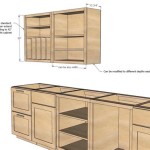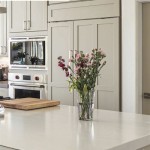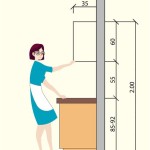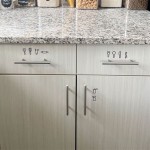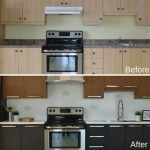How to Install Kitchen Cabinet Knobs: A Comprehensive Guide
Upgrading kitchen cabinets with new knobs is a cost-effective way to refresh a kitchen's appearance. This seemingly simple task requires careful planning and execution to ensure proper alignment, functionality, and aesthetic appeal. This guide provides a step-by-step approach to installing kitchen cabinet knobs, covering everything from preparation to final adjustments.
Gathering the Necessary Tools and Materials
Before beginning the installation process, assembling the required tools and materials ensures a smooth and efficient workflow.
*Knobs:
Select knobs that complement the kitchen's style and are comfortable to grip. *Screwdriver:
Choose a screwdriver that matches the screw heads included with the knobs. *Drill:
A drill with various drill bits may be necessary for cabinets without pre-drilled holes. *Measuring Tape:
Accurate measurements are crucial for consistent knob placement. *Pencil:
Marking the desired knob locations ensures precision. *Level:
A level verifies that knobs are installed straight. *Template (Optional):
A template helps maintain consistent spacing, especially beneficial for multiple cabinets. *Painter's Tape:
Painter's tape safeguards cabinet surfaces during drilling and installation.Preparing the Cabinets for Knob Installation
Proper preparation is essential for achieving professional-looking results and preventing potential damage to the cabinets. Thorough assessment and cleaning optimize the installation process.
*Clean the Cabinets:
Cleaning the cabinet surfaces removes grease and dirt, ensuring proper adhesion for any painter’s tape used. *Inspect Existing Holes:
Check if existing holes align with the new knobs. If not, filling and re-drilling may be necessary. *Protect Cabinet Surfaces:
Apply painter's tape around the designated installation areas to prevent scratches or damage during drilling.Measuring and Marking for Knob Placement
Accurate measurements and markings are critical for achieving uniform knob placement across all cabinet doors and drawers. Consistent placement ensures both visual appeal and functionality.
*Determine Knob Placement:
Consider the size and style of the cabinets and knobs when choosing placement. Common locations include the center of cabinet doors and the corners of drawers. *Measure and Mark:
Use a measuring tape and pencil to mark the precise location for each knob. A template can ensure consistent spacing across multiple cabinets. *Double-Check Measurements:
Verify all measurements before drilling to avoid costly mistakes.Drilling Pilot Holes (If Necessary)
Drilling pilot holes is crucial for cabinets that lack pre-drilled holes. Proper pilot hole size prevents wood splitting and ensures secure knob attachment.
*Select the Correct Drill Bit:
Choose a drill bit slightly smaller than the knob screw diameter. This allows the screw to bite into the wood without stripping the hole. *Drill Pilot Holes:
Carefully drill pilot holes at the marked locations, ensuring they are straight and perpendicular to the cabinet surface.Installing the Knobs
With the preparation and pilot holes complete, knob installation is a straightforward process. Careful alignment and tightening ensure a secure and aesthetically pleasing finish.
*Align the Knobs:
Insert the knob screw through the hole in the cabinet from the back, ensuring the knob is oriented correctly. *Attach the Hardware:
Attach the knob to the screw from the front of the cabinet. *Tighten the Screws:
Tighten the screws using the appropriate screwdriver until the knob is securely fastened. Avoid overtightening, which can damage the cabinet or knob.Using a Template for Consistent Placement
A template is highly recommended for achieving consistent knob placement, especially when installing multiple knobs. This approach minimizes errors and saves significant time.
*Create a Template:
A template can be crafted from cardboard or thin wood, marking the desired knob locations. *Position the Template:
Secure the template to the cabinet using painter's tape. *Drill Through the Template:
Drill pilot holes through the template into the cabinet. This ensures consistent placement for each knob.Addressing Common Challenges
While generally straightforward, knob installation can present some common challenges. Understanding these potential issues and their solutions helps ensure a successful outcome.
*Uneven Surfaces:
Shims can be used to level the knob base on uneven surfaces. *Stripped Screws:
If a screw becomes stripped, try using a larger screw or filling the hole and re-drilling. *Misaligned Knobs:
If a knob is misaligned after installation, slightly loosen the screw, adjust the knob, and re-tighten.Final Inspection and Adjustments
A final inspection ensures all knobs are securely fastened and aligned correctly. Minor adjustments can be made at this stage to achieve a professional finish.
*Check for Stability:
Ensure all knobs are firmly attached and do not wobble. *Verify Alignment:
Visually inspect each knob to ensure it is straight and aligned with other knobs. *Make Adjustments:
Tighten or loosen screws as needed to achieve perfect alignment and stability.
How To Install Cabinet Handles Ultimate Stress Free Tips

Learn How To Place Kitchen Cabinet Knobs And Pulls Cliqstudios

How To Install Cabinet Handles Ultimate Stress Free Tips

How To Easily Install Kitchen Cabinet Hardware The American Patriette

How To Place Cabinet Knobs Pulls

Installing Cabinet Knobs Pretty Handy Girl

Cabinet Hardware Installation Guide At Cabinetknob Com

A Simple Guide For Cabinet Knob Placement Julie Blanner

How To Install Hardware Like A Pro Kitchen Renovation House Of Hepworths

Mistakes To Avoid When You Install Kitchen Cabinet Pulls Free Template
Related Posts

